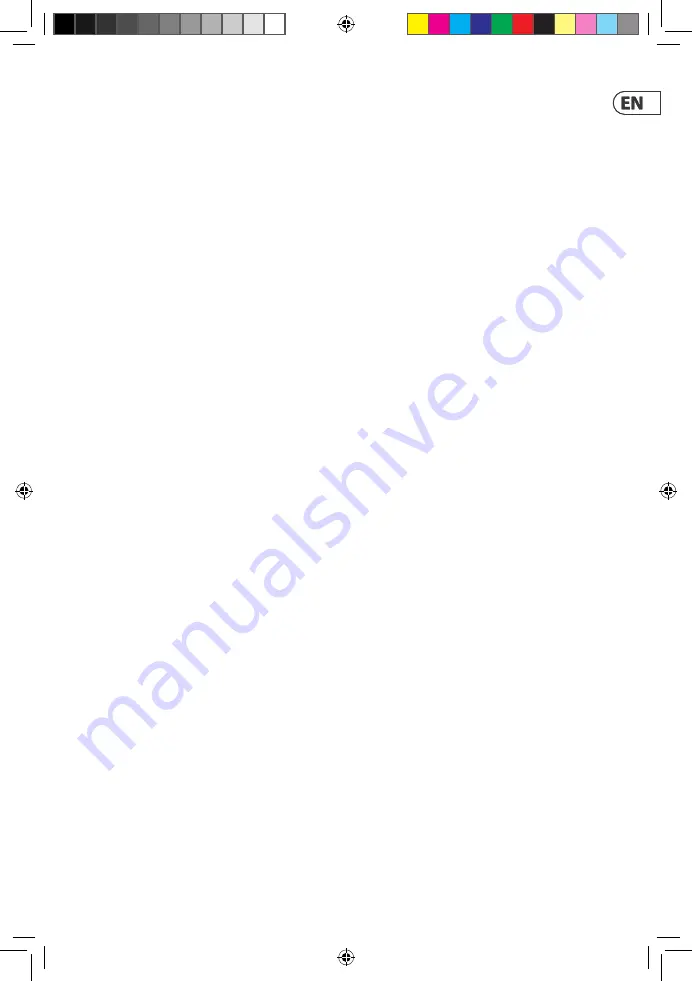
(29)
OCTAVE/LOCATION
- these multi-colored LEDS show
various details, such as the Octave, PATTERN number,
BANK number, current PAGE, and GATE LENGTH.
(30)
KEYBOARD/STEP SWITCHES
- these multifunction
switches allow you to view and select individual pattern
steps, select a pattern number, select a pattern bank.
They are used during recording of a pattern to show the
current step. Active steps are illuminated with a steady red
LED, and the current step flashes red.
The switches are laid out as a 13-note keyboard. The octave
can be moved up and down by pressing the <KYBD or
STEP> switches, and the row of 8 LEDs will show the current
octave. The switches are used to control the sequencer
editing, as well as the arpeggiator operation.
(31)
SHIFT
- this is used to access the secondary features of
some of the other sequencer controls, such as SET END,
BANK, SWING, KYDB, and STEP. Hold down SHIFT and
the other switch at the same time. For example SHIFT +
PATTERN (BANK) will show the current BANK number in
the LOCATOR LEDs.
(32)
PAGE
- each pattern can be up to 32 steps in length.
This switch allows you to show each of the 4 pages of
8 steps each. The LOCATION LEDs 1 to 4, show which page
you are on. If a pattern is playing, the STEP LEDs will show
the steps in use on the current page.
(33)
PLAY/STOP
- starts or stops the playback of the pattern.
If SHIFT is held at the same time, then this is the start of
the pattern saving procedure.
(34)
REC
- press this to begin the recording of a new pattern.
This is also used with SHIFT during the pattern saving
procedure.
(35)
KYBD
- press SHIFT + KYBD to change the sequencer
to keyboard mode. Press to change the 13-note
keyboard octave.
(36)
STEP
- press SHIFT + STEP to change the sequencer to
STEP mode. Press to change the 13-note keyboard octave.
(37)
POWER
- indicates that power is supplied to the unit and
the rear-panel power switch is on.
MIDI Section
(38)
MIDI IN
- this 5-pin DIN jack receives MIDI data from an
external source. This will commonly be a MIDI keyboard,
an external hardware sequencer, a computer equipped
with a MIDI interface, etc.
(39)
MIDI OUT/THRU
– passes through MIDI data received at
the MIDI INPUT and sends MIDI data to an application.
Patchbay (3.5 mm TS connections)
Input Section
(40)
OSC CV
- oscillator pitch CV, at 1V/octave.
(41)
OSC FM
- oscillator frequency modulation.
(42)
OSC MOD
- oscillator modulation.
(43)
VCF CUTOFF
- VCF cuto
ff frequency CV.
(44)
VCF RES
- VCF Resonance CV.
(45)
MIX 1
- mix 1 CV in, connected internally to VC MIX.
(46)
MIX 2
- mix 2 CV in, connected internally to VC MIX.
(47)
VC MIX
- VC mix control CV in, connected internally to
VC MIX.
(48)
MULTIPLE
- any signal entered here is passed out to both
MULTIPLE outputs.
(49)
MIX CV
- mix CV.
(50)
EXT AUDIO
- external audio input.
(51)
TEMPO
- sequencer tempo.
(52)
PLAY/STOP
- sequencer play/stop.
(53)
RESET
- sequencer reset.
(54)
HOLD
- sequencer hold.
(55)
ENV GATE
- envelope gate.
(56)
VCA CV
- VCA CV.
(57)
LFO RATE
- LFO frequency rate CV.
Patchbay (3.5 mm TS connections) Output Section
(58)
MULTIPLE
- copy of multiple input.
(59)
MULTIPLE
- another copy of multiple input.
(60)
OSC PULSE
- oscillator pulse waveform output.
(61)
OSC SAW
- oscillator reverse sawtooth waveform output.
(62)
ENV
- envelope output.
(63)
NOISE
- noise output.
(64)
VCA/LINE
- connect this 3.5 mm TS output to the
line-level audio input of your system. Make sure the
volume is turned down and the system is turned off
before making connections.
(65)
PHONES
- connect your headphones to this 3.5 mm TRS
output. Make sure the volume is turned down before
putting on headphones.
(66)
LFO TRI
- LFO triangular waveform output.
(67)
LFO SQU
- LFO square waveform output.
(68)
VC MIX
- VC mix output connected internally to VC MIX.
(69)
ASSIGN
- assign output.
(70)
KB CV
- keyboard CV output.
(71)
GATE
- gate output.
(72)
VCF
- VCF output.
Rear Panel
(73)
MIDI CHANNEL
- these 4 switches allow you to set the
MIDI Channel number from 1 to 16, as shown in the chart.
(74)
USB PORT
- this USB type B jack allows connection
to a computer. The CRAVE will show up as a class-
compliant USB MIDI device, capable of supporting MIDI
in and out.
USB MIDI IN
- accepts incoming MIDI data
from an application.
USB MIDI OUT
- sends MIDI data to an application.
(75)
POWER
- turn the synthesizer on or off. Make sure all the
connections are made before turning on the unit.
(76)
DC INPUT
- connect the supplied 12 V DC power adapter
here. The power adapter can be plugged into an AC outlet
capable of supplying from 100 V to 240 V at 50 Hz/60 Hz.
Use only the power adapter supplied.
21
Quick Start Guide
Содержание CRAVE
Страница 19: ... 73 74 76 75 1 2 3 4 5 6 7 8 9 10 11 12 13 14 15 16 19 Quick Start Guide ...
Страница 68: ...CRAVE Patch Sheet Patch Number DATE NOTES AUTHOR TITLE 68 CRAVE ...
Страница 69: ...CRAVE Default Patch 69 Quick Start Guide ...
Страница 77: ...77 Quick Start Guide ...
Страница 78: ...78 CRAVE ...
Страница 79: ...79 Quick Start Guide ...
Страница 80: ...We Hear You ...


































